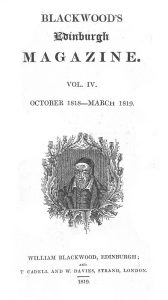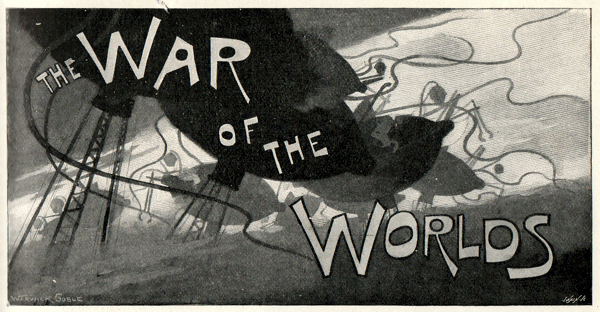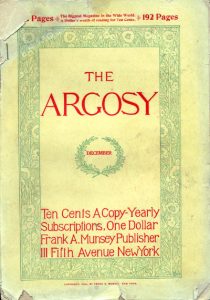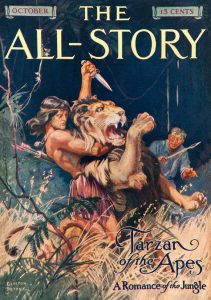 Although magazines have been around since the seventeenth century — the first regular periodical was ERBAULICHE MONATHS UNTERREDUNGEN, a literary and philosophy magazine, launched in Germany in 1663 — it was only with the arrival of increased literacy and lower costs in the early nineteenth century that magazines of mass appeal began to be produced.
Although magazines have been around since the seventeenth century — the first regular periodical was ERBAULICHE MONATHS UNTERREDUNGEN, a literary and philosophy magazine, launched in Germany in 1663 — it was only with the arrival of increased literacy and lower costs in the early nineteenth century that magazines of mass appeal began to be produced.
As Europe and North America became increasingly industrialized, magazines began to reach a much wider, sometimes national, audience. BLACKWOOD’S MAGAZINE, NOUVEAU MAGAZINE DES ENFANTS, HARPER’S NEW MONTHLY MAGAZINE, ATLANTIC MONTHLY, SCRIBNER’S MONTHLY, and others emerged, publishing the fiction of Charles Dickens, Fitz-James O’Brien, Walter Scott, Mark Twain, Jules Verne, and others. The dime novels, penny-dreadfuls, and story papers were also introduced during these years, offering tales of derring-do to a growing juvenile audience. It was in such periodicals that the “American Jules Verne,” Luis Senarens, developed the Frank Reade, Jr. series of adventure yarns.
The last quarter of the nineteenth century has become known as “The Age of the Storytellers.” Beginning around 1880, when Robert Louis Stevenson started to publish his first works of fiction, the world would witness the birth of the popular fiction magazine as well as the pulp magazine. Stevenson’s “Treasure Island,” first serialized in 1881 – 82, helped provide the spark for other authors to try their hand at similar fiction. Works such as H. Rider Haggard’s King Solomon’s Mines (1885), “She” (1886), and “Allan Quatermain” (1887), as well as Arthur Conan Doyle’s “A Study in Scarlet” (1887), demonstrated the need for an inexpensive, popular fiction magazine to be published on a regular basis. Shortly after Christmas in 1890, the first of these — THE STRAND MAGAZINE — was launched in Great Britain by George Newnes. Filled with illustrations, the periodical really took off during the summer of 1891 with the start of Conan Doyle’s “The Adventures of Sherlock Holmes,” featuring one of the most successful continuing character series of all time.
With the success of THE STRAND MAGAZINE came a host of imitators, among them PEARSON’S MAGAZINE, another popular British fiction magazine. It debuted in late 1895 and soon became one of the leading publishers of magazine science fiction, featuring the future war stories of George Griffith and the scientific romances of Herbert George Wells. “The War of the Worlds” and “The Invisible Man,” both originally published in PEARSON’S in 1897, are still enjoyed today, over a century after their initial appearances. Educated in the sciences as well as a literary genius, Wells’ mastery of both science and fiction was readily apparent. His later science fiction, including “The First Men in the Moon” (1900-1901) and “The Country of the Blind “1904), would run in THE STRAND.

The British popular fiction magazines were modeled after the illustrated periodicals of America. However, unlike their British counterparts, the leading American magazines of the late nineteenth century – HARPER’S, CENTURY MAGAZINE, and SCRIBNER’S – were beyond the financial and intellectual reach of the average U. S. citizen. It was left to Frank A. Munsey – a man about whom it has been suggested, “contributed to the journalism of his day the talent of a meat packer, the morals of a money changer and the manner of an undertaker” – to deliver the first American periodical specifically intended for the common man. In his own words, Munsey decided to create “a magazine of the people and for the people, with pictures and art and good cheer and human interest throughout.”
Frank Munsey was born in Maine where he became interested in publishing. With minimal funds, he traveled to New York City and founded THE GOLDEN ARGOSY, a children’s weekly, in late 1882. Working largely on credit, he struggled for years, building his circulation through advertising and sheer determination. Deciding that the future lay in the adult market, he founded MUNSEY’S WEEKLY in 1889, soon converting it to MUNSEY’S MAGAZINE. In 1893, convinced that a magazine could only be successful if the price was right, he slashed the price of MUNSEY’S to a dime and marketed it directly to newsdealers, essentially cutting out the middle man.
 As the circulation of MUNSEY’S climbed to hundreds of thousands of copies, the publisher converted THE ARGOSY to an adult magazine, similarly priced and modeled after its brethren. Envisioning a new kind of magazine, Frank Munsey wrote, “We want stories . . . . not dialect sketches, not washed out studies of effete human nature, not weak tales of sickly sentimentality, no ‘pretty’ writing . . . . We do want fiction in which there is a story, a force, a tale that means something – in short, a story. Good writing is as common as clamshells, while good stories are as rare as statesmanship.”
As the circulation of MUNSEY’S climbed to hundreds of thousands of copies, the publisher converted THE ARGOSY to an adult magazine, similarly priced and modeled after its brethren. Envisioning a new kind of magazine, Frank Munsey wrote, “We want stories . . . . not dialect sketches, not washed out studies of effete human nature, not weak tales of sickly sentimentality, no ‘pretty’ writing . . . . We do want fiction in which there is a story, a force, a tale that means something – in short, a story. Good writing is as common as clamshells, while good stories are as rare as statesmanship.”
In October 1896, THE ARGOSY became the first all-fiction magazine. Two months later in a cost-cutting move, it began to be printed on the wood-pulp paper Munsey used for his daily newspaper and the rough-paper fiction magazine, or pulp, was born. Within a short while, its circulation had doubled to about 80,000 copies per issue. By 1907, the year the periodical celebrated its 25th anniversary, its circulation had reached a half million copies, earning its publisher about $300,000 per year.
As its readership grew, THE ARGOSY was bound to attract some imitators. Street & Smith, the longtime publisher of dime novels and story papers, was first to meet the call, debuting THE POPULAR MAGAZINE with its November 1903 issue. As the circulation of the new magazine grew, it became apparent to Frank Munsey that there was room on the newsstand for more than one pulp. At the end of 1904, the publisher debuted THE ALL-STORY MAGAZINE.
More than any other periodical prior to the introduction of the specialized science-fiction and fantasy pulps, THE ALL-STORY became the major repository for the “different” tale or the pseudo-scientific yarn. It was soon joined by other Munsey magazines – THE SCRAP BOOK and THE RAILROAD MAN’S MAGAZINE (both 1906), THE OCEAN/LIVE WIRE (1907), and THE CAVALIER (1908). All of these, THE CAVALIER in particular, published fantastic fiction. However, it was all but a prelude to the serial novel that would begin in the February 1912 issue of THE ALL-STORY — “Under the Moons of Mars” – credited to Norman Bean.
 Bean’s novel — the first published fiction of Edgar Rice Burroughs — would introduce John Carter of Mars to readers. It would soon be followed by the author’s “Tarzan of the Apes,” published in its entirety in the October 1912 issue of THE ALL-STORY. These two novels, along with the pseudo-scientific works of H. G. Wells and his American disciple, George Allan England, would serve as templates for much of the science fiction written over the next twenty-five years, generating a type of fiction best known as “the scientific romance.” The Munsey chain in particular worked to develop this school of fiction, creating a stable of writers – Ray Cummings, J. U. Geisy, Victor Rousseau, Francis Stevens, Charles B. Stilson, and the best of all, Abraham Merritt – able to contribute such stories.
Bean’s novel — the first published fiction of Edgar Rice Burroughs — would introduce John Carter of Mars to readers. It would soon be followed by the author’s “Tarzan of the Apes,” published in its entirety in the October 1912 issue of THE ALL-STORY. These two novels, along with the pseudo-scientific works of H. G. Wells and his American disciple, George Allan England, would serve as templates for much of the science fiction written over the next twenty-five years, generating a type of fiction best known as “the scientific romance.” The Munsey chain in particular worked to develop this school of fiction, creating a stable of writers – Ray Cummings, J. U. Geisy, Victor Rousseau, Francis Stevens, Charles B. Stilson, and the best of all, Abraham Merritt – able to contribute such stories.
Although the fiction of Burroughs and Wells and those “inspired” by their work would remain popular for some time to come, its share of the pulp market would diminish as new magazines began to arrive on the scene. Beginning with ADVENTURE MAGAZINE, introduced by the Ridgway Company in 1910, these specialized pulps lessened the attraction of the general fiction magazines for those who enjoyed a certain type of story – mystery, romance, western, or straight adventure. In not too many years, the fantasy and science-fiction fan would likewise be served.
The word “argosy” is defined as a large merchant ship, especially one with a rich cargo. With the terrific programming we’re lining up for PulpFest 2016, you’re promised “an abundance of riches” We’ll be saluting a wide range of anniversaries at this summer’s pulp con: the tenth anniversary of Sanctum Books; the eightieth anniversary of THE WHISPERER and THE SKIPPER; the ninetieth anniversary of AMAZING STORIES, the first science-fiction pulp; the hundredth anniversary of the specialty pulp; the 120th anniversary of THE ARGOSY, the original pulp magazine; and the 150th anniversary of the birth of H. G. Wells!
Check out our post of January 4, 2016 — “Coming Soon to Columbus — PulpFest 2016” — for a look at our planned. We’ll be featuring a pair of presentations on THE ARGOSY. “120 Years of THE ARGOSY — The World’s First Pulp Magazine,” will be offered by Doug Ellis, one of the world’s leading collectors and authorities on the magazine and a founder of the fabulous Windy City Pulp and Paper Convention. Art and pulp historian David Saunders will be discussing “The Artists of THE ARGOSY — 120 Years of Sensational Pulp Artists.” Both presentations are planned for Saturday evening, July 23rd, immediately preceding our exciting auction.
“Summer’s AMAZING Pulp Con” will take place from July 21st through July 24th in the Columbus, Ohio Arena district at the Hyatt Regency hotel and the city’s spacious convention center. Start making your plans to join us at the “pop culture center of the universe” for PulpFest 2016.
BLACKWOOD’S EDINBURGH MAGAZINE — which first appeared in April 1817 — was one of the first magazines to reach a national audience. It’s introduction helped pave the way for the popular fiction periodicals of the late nineteenth century. Pictured here is volume 4 of the magazine, dated October 1818 – March 1819. The image on the cover is an engraving of the 16th-century Scottish historian George Buchanan. BLACKWOOD’S continued publication until 1980.
PEARSON’S MAGAZINE was one of the popular British fiction magazines that emerged during the late 1800s. Its first issue was dated January 1896. The magazine’s publisher, C. Arthur Pearson, was “fascinated with stories of the future and what science might bring. Hence, it comes as no surprise that H. G. Wells’ “War of the Worlds” was originally serialized in eight parts in PEARSON’S, running from April the December in 1897. It was illustrated by Warwick Goble. PEARSON’S ran for over 500 issues. Its last issue was dated November 1939.
The December 1896 issue of THE ARGOSY, published by Frank A. Munsey, was the world’s first pulp fiction magazine. It would continue for nearly eighty years, ending as a “men’s adventure magazine.” Its final issue was dated November 1978.
One of the most popular authors to appear in the Munsey magazines was undoubtedly Edgar Rice Burroughs. His adventure romance, “Tarzan of the Apes,” was published in its entirety in the October 1912 issue of THE ALL-STORY. The issue featured front cover art by Clinton Pettee who drew interior story illustrations for MUNSEY’S MAGAZINE and painted covers for such pulp magazines as THE ARGOSY,THE ALL-STORY, THE CAVALIER, and SHORT STORIES.





